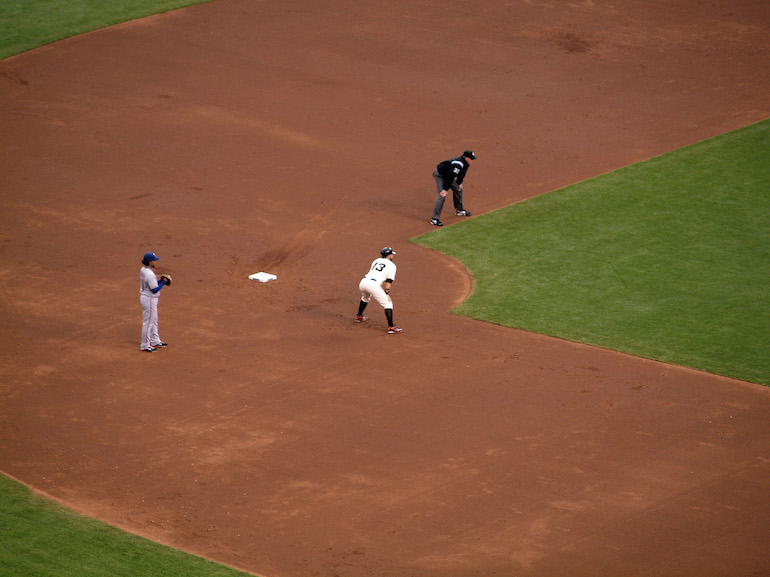New Rules: Major League Baseball and the Coronavirus

At a press conference late yesterday, Major League Baseball officials announced that the 2020 season will shortly get underway. This is great news for all sports fans, especially those on the East End who drive or take the Jitney to Yankee Stadium or Citi Field.
Many rules have been changed, though. Here are the major ones.
Outfielders may not leap up against the outfield walls to rob a batter of a home run by putting a hand, even a gloved one, within six feet of a fan.
If two outfielders accidentally run into one another while trying to catch a fly ball, the game is immediately cancelled.
A team of players rushing out of a dugout to attack a pitcher who hit a batter on the bean immediately forfeits the game.
There are two first bases. The first is three feet closer to home plate for the runner. The second is three feet further from home plate for the fielder. If a runner gets to his first base before the fielder catches the ball and steps on his first base, the runner is safe. If the reverse is true, the runner is out.
The same is true for second and third base.
Stealing a base is not allowed. Sliding into a base is not allowed. Tagging a runner with the ball is not allowed. Running down a baserunner between two bases is considered an out as soon as any infielder on the baseline between the two bases received the ball. A pitcher picks off a base runner if he throws to a fielder who steps on the fielder’s base before the baserunner steps back on the runner’s base. Throwing a spitball gets a pitcher thrown out of the game and banned from future play for a month.
If a pitcher falters and the manager comes out to talk to him, the pitcher puts on earphones and listens to his coach talking into a lapel microphone from a six-foot distance. He responds by nodding or shaking his head.
At home plate, the batter stands over the plate with his bat ready for a pitch, but the catcher is six feet behind the batter.
Two umpires call balls and strikes. One stands six feet behind the catcher to see if the ball goes over at least a piece of the plate. Another umpire stands six feet off to the side to see if the pitch is between the chest to knees. If either one or both of the two umpires calls the pitch out of the strike zone from his perspective, the call is a ball. Otherwise a strike.
Foul balls must be allowed to drop without being fielded. Doing otherwise is courting danger.
If a runner is rounding third heading for home, the catcher must get six feet away after touching home plate while holding the ball in front of the runner to get the runner out.
Any team that tries a double play by throwing to second and then to first is disqualified.
Spectators must wear masks and gloves and be 10 feet from one another in the stands instead of six. Since a stadium seat is approximately 16 inches wide, no spectator may sit within seven seats of another spectator. Tickets are sold accordingly. In a 40,000-seat stadium such as Citi Field, this means an attendance of 7,312 is a sell out.
Once seated, no spectator may go up the stairs to buy food or drink. Instead, food or drink may only be sold by the vendors walking up and down the aisles (as they do today) who must now wipe down whatever they sell with a hand-sanitizer cloth before setting it on the ground in a bag near the purchaser.
Having players stand in a line to high-five other players trotting past at the end of a game is forbidden.
Until Opening Day, Hamptonite couch potatoes can continue to watch these 10 excellent baseball films: The Bad News Bears, Eight Men Out, A League of Their Own, Bull Durham, Moneyball, Field of Dreams, The Natural, Bang the Drum Slowly, Major League and The Bingo Long Traveling All-Stars & Motor Kings.
Readers are welcome to add their own baseball rule changes at DansPapers.com/DansStories.




